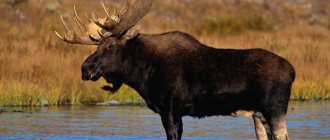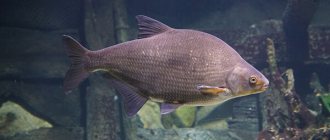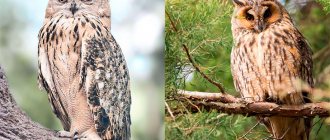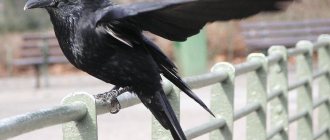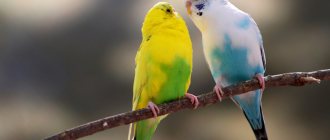Characteristics and origin of the species
The Nar camel is a hybrid of a camel (two-humped and one-humped), obtained by crossing according to the Kazakh method.
The parents of a nara can be a male bitrugan (a cross between a one-humped camel and a two-humped camel) with a female of the two-humped species (Bactrian) or a male Bactrian with a female nara.
Nar inherited their best qualities from their parents and, like any hybrid, has its own distinctive features:
- Hardier and stronger than both parents;
- The coat is shorter than that of the Bactrian and thicker than that of the Birtugan;
- Larger than Bactrian and Birtugan;
- It differs from Bactrian by having only one hump.
The bunks have high performance indicators. If a camel regularly receives food, it will easily cover a multi-day journey without stopping. At short distances, the hybrid is capable of carrying a load of up to 40 pounds or even more on its back.
Zoologists classify the Nara as a dromedary camel. Its only hump is wide with a hollow. The height of the hybrid at the shoulders is 250 cm. A camel weighs on average 1000 kg.
Widely distributed in Asia, Uzbekistan, Turkmenistan, Kyrgyzstan. They are also found in Afghanistan, Iran, and Turkey.
Where live
In photographs depicting the camel's lifestyle, you will not see lush vegetation or tropical forests, since the humid climate is destructive for it.
Wild individuals prefer to settle in dry steppes, deserts and semi-deserts of Central and Central Asia, while domestic ones can be found in the north and southwest of Africa, Australia, and the countries of the Middle East.Contents of the bunks
Fresh air is of great importance for a camel, so an open room is suitable for keeping.
The best food for working animals is weeds and meadow hay. The daily norm must be divided into 3 times; overeating can have a bad effect on the well-being of the bunk. For camels performing particularly difficult work, cake or oats are a good help. Lard poured into the mouth or nose can restore strength to an animal even when exhausted. A necessary additive to camel feed is lake salt and straw ash.
The bunks are watered once a day, but a camel can drink up to 5 buckets of water at a time.
Reproduction and offspring
The ability to reproduce offspring is another feature of the hybrid. But Nar camel cubs are born weak and sickly. Male Nara are usually sterilized and females mate with other species. Crossing with a male Bactrian will result in a Cospak, and mating with a camel (male dromedary and female Nara) will result in a Kochert hybrid.
Sexual maturity of females occurs in the third year of life, males mature later. In autumn, the mating season begins for animals. Males during the rutting period pose a danger not only to competitors, but also to humans. They behave very aggressively, making whistling sounds and spitting. Camels mate lying down. When the female chooses a suitor, she lies on her stomach and bends her legs under her. The camel sits on top of the “bride”, hugging her sides with his forelimbs. The process lasts on average 15 minutes. After mating, the male runs to conquer another lady. He continues to observe the fertilized individual so that other camels do not approach it.
The female carries the baby camel for 13 months. The newborn weighs at least 35 kg.
Camel with one hump
The dromedary camel is also called the dromedary and the Arabian. In our time, this species has been completely domesticated, with the exception of only secondarily wild individuals.
These animals have long legs and a slender build, as a result of which they are inferior to their two-humped comrades in height and weight.
Camels have dense, but not thick, hair, which is why the animal is not adapted to live in low temperatures.
Khaptagai
Most sources name only such types of camels as one-humped and two-humped. But some scientists are inclined to classify haptagai as a separate species. The version is supported by the results of genetic studies and obvious external differences. Moreover, even the belief that Bactrian descended from the wild haptagai is questioned. Outwardly they are similar. But the wild camel is smaller than representatives of domestic meat breeds.
The subspecies was first described by the famous researcher Przhevalsky. At the time of the scientist, the population of wild Bactrian camels was much larger than it is now. Currently, there are only a few hundred haptagai.
All kinds of studies of these animals make it possible to better study them and determine measures that will help maintain the number of livestock. In addition, scientists are trying to establish the degree of relationship between Bactrians. Perhaps these are still different types of camels, but at present official science does not recognize this.
General characteristics of the family
Of course, the main distinguishing feature is the presence of a hump. By the way, it is by this feature that you can easily understand what species a camel belongs to. The camelid family includes several genera that are not camels, but are very closely related to them. All of these animals are mammals. The family belongs to the order Artiodactyla and the suborder Callopods. The peculiar structure of the legs is one of the main characteristics of the family. All camelids do not have (functional) hooves, and the underside of the foot is a calloused pad. In some genera it is paired, in others it is not.
Another characteristic feature is a long neck. But the most unusual, perhaps, is another feature of camelids, which is not visible to the naked eye. All members of the family have oval red blood cells, rather than round ones, like almost all other animals (and humans).
It is noteworthy that the vast majority of members of the family are excellent swimmers. In the natural habitat of camels, as a rule, there is a shortage of water; many of them have never seen lakes or rivers in their lives, so the mechanism of this phenomenon is not completely clear.
Nutrition
The dromedary camel is an unpretentious animal when it comes to food, since in drought it is very rare to find anything better than thorns. Dromedaries are accustomed to eating plant foods of various shapes and colors. When feeding, the animal hardly chews the food, and it falls into the forepaw, where it is completely processed.
Because of this, the camel's metabolism resembles that of ruminants, although it does not belong to them. Most likely, the dromedary's digestion developed separately. The diet of camels includes hard, inedible food. When it gets cold, they start eating poplar leaves or reeds. If there are no plants nearby, they can feed on the skins of dead animals.
Camels can live for about a month without water, but then they urgently need to replenish their fluid reserves. They are also not very interested in the quality of water. Wild camels drink from various sources, even brackish ones.
Camels spit and this is their distinguishing feature of digestion. In addition to saliva, the camel spits out undigested food particles. Along with its lifespan without water, it can live without food for about thirty days using its reserves.
Interesting facts about llamas
- Llamas rarely allow members of their own species into the herd, especially males. However, they are friendly towards goats, sheep and other bovids and even take care of them. Since the end of the last century, on farms in North America, Peruvian llamas began to be used to protect herds of small livestock from attacks by predators. For these purposes, a castrated male is introduced into the herd before lambing, who subsequently protects the growing offspring from attacks by coyotes and wild dogs.
- The peculiarities of llamas include their ability to camouflage their habitat: animals do not leave excrement on pastures, frequently used paths or near rest areas, which makes it difficult for predators to find the herd. Usually all llama manure is in one place, as far away from the group as possible. Residents of South American countries still use sun-dried ungulate excrement to heat their homes and cook food.
- Currently, llamas are bred in climate-appropriate regions of North America, Europe, and Australia. Livestock farms supplying wool and dietary animal meat are quite profitable. In Europe and America, annual competitions are held to determine individuals with the highest quality fleece. Breeding llamas in Russia is just beginning to become popular.
- Externally, llamas give the impression of very cute and good-natured animals. They really have a calm character, are easily tamed and lead a measured lifestyle. However, peacefulness and goodwill remain until the lama is satisfied with everything. When a conflict arises with a relative or a person, the animal shows aggression: it spits the contents of its stomach, it can kick or kick.


